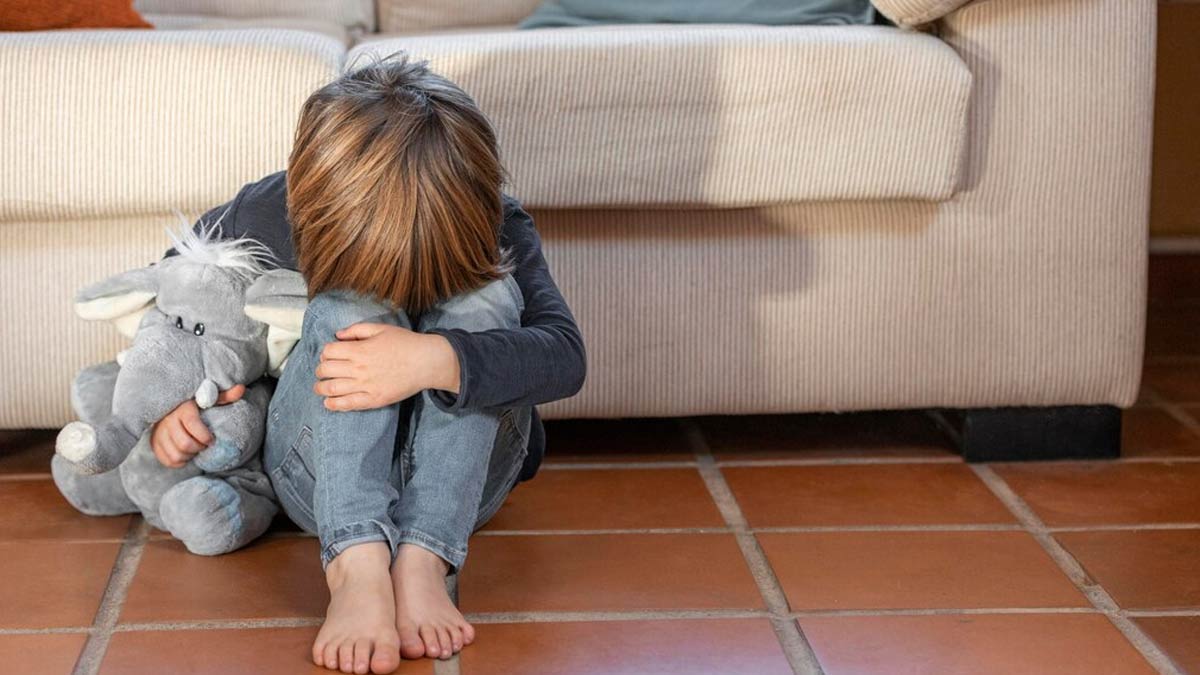
In a recent interview with National Public Radio (NPR), renowned actress Emma Stone candidly shared her childhood struggles with anxiety. The Oscar-winning star disclosed that she began therapy at the age of 8 due to the overwhelming fear that made it difficult for her to leave the house for school.
Table of Content:-
Childhood Anxiety Unveiled
Stone, now 35, revealed that her first panic attack occurred at the tender age of seven, primarily triggered by the fear of being separated from her mother. This revelation sheds light on the pervasive issue of childhood anxiety, a condition affecting both adults and children. Stone's openness about her experience aims to destigmatize mental health issues, particularly in children.

As parents, caregivers, and educators, it is crucial to be aware of potential signs of anxiety in children, as highlighted by the Centers for Disease Control and Prevention (CDC). When fears and worries persist, interfering with daily activities, it may indicate an anxiety disorder. Separation anxiety, a common manifestation in children, involves an intense fear when away from parents.
Stone, who began her acting career at 11, emphasized that acting became a therapeutic outlet for her. It provided a means to focus on the present moment, steering away from preoccupations with past and future uncertainties. This perspective shift has positively impacted her perception of anxiety, portraying it as a source of productive energy in her acting pursuits.
Understanding Childhood Anxiety: Types and Prevalence
Anxiety and fear are inherent aspects of childhood, usually transient and indicative of problem-solving skills development. However, up to 20% of children may experience anxiety disorders, characterized by extreme avoidance, heightened emotional reactions, or prolonged duration.
Also Read: Mental Health A-Z: Expert Explains Anxiety And How To Deal With It
Various anxiety disorders prevalent in children include:
Separation Anxiety Disorder
Extending beyond typical developmental phases, children may exhibit excessive distress and worry when separated from family, impacting school attendance and daily activities.
Specific Phobias
Intense fears disproportionate to actual threats, such as fears of storms or clowns, fall under specific phobias.
Social Anxiety Disorder
Marked by an intense fear of judgment or rejection in social situations, leading to avoidance of interactions.
Generalized Anxiety Disorder
Excessive worry about various daily life events is often accompanied by physical symptoms.
Panic Disorder
Sudden episodes of extreme fear and physical symptoms, such as racing heart and dizziness.
Recognizing Signs and Seeking Help
Parents may notice signs of anxiety in their children, including increased worry, physical complaints, sleep disturbances, irritability, and avoidance behaviours. Understanding these signs is vital, as anxiety disorders can impact a child's emotional well-being, academic performance, and overall quality of life.
Factors contributing to childhood anxiety range from biological predispositions to environmental stressors, such as family conflicts, relocations, or traumatic events. Recognizing and addressing these factors is essential in supporting a child's mental health.
Also Read: What Exactly Does A Panic Attack Feel Like: How Is It Different From An Anxiety Attack?
Treatment Options: Cognitive Behavioural Therapy and Medication
Treatment approaches for childhood anxiety often involve a combination of cognitive behavioural therapy (CBT) and, in some cases, medication. CBT equips children with coping skills to manage anxiety, fostering resilience and gradual exposure to fears.
Medications, such as selective serotonin reuptake inhibitors (SSRIs) or serotonin and norepinephrine reuptake inhibitors (SNRIs), may be prescribed when necessary. It is crucial for parents to communicate openly with healthcare providers, monitoring potential side effects and seeking immediate attention if needed.
Conclusion: Breaking the Stigma, Nurturing Mental Health
Emma Stone's revelation serves as a powerful reminder that mental health challenges, even in childhood, are common and treatable. By understanding the symptoms and seeking appropriate help, we can foster an environment where children feel supported, breaking the stigma surrounding mental health and ensuring a brighter future for the next generation.
[Disclaimer: This article contains information provided by a registered healthcare professional and is for informational purposes only. Hence, we advise you to consult your expert for a treatment plan tailored to your medical history and needs.]
Also watch this video
How we keep this article up to date:
We work with experts and keep a close eye on the latest in health and wellness. Whenever there is a new research or helpful information, we update our articles with accurate and useful advice.
Current Version